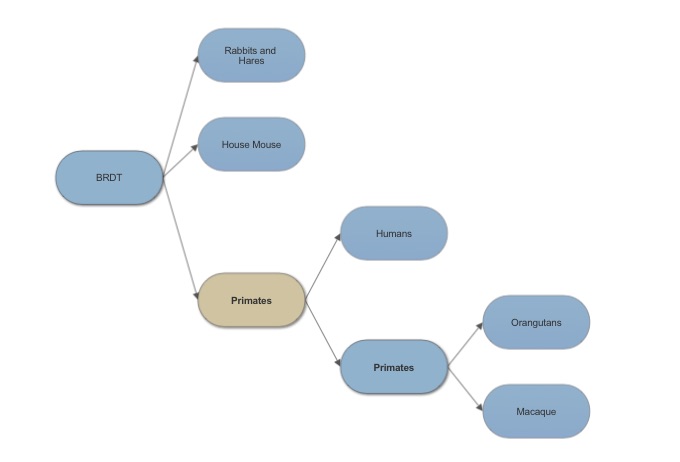User:Elisha Lacey/Sandbox 1
From Proteopedia
(Difference between revisions)
| Line 11: | Line 11: | ||
[[Image:JQ1 strucutre.jpg]] | [[Image:JQ1 strucutre.jpg]] | ||
==Analysis of Structure == | ==Analysis of Structure == | ||
| - | The functional unit for BRDT is two bromodomain motifs, each monomer is composed of 4 anti-parallel alpha helixes. At the end of the helix bundles is the acetylated-lysine binding site binding site. BRDT belongs to the histone acetyltransferase superfamily. BRDT is tissue restricted to the testis. BRDT activates the histones by hyper acetylation at the promoter of genes leading to condensed acetylated chromatin of a haploid spermatid. | + | The functional unit for BRDT is two bromodomain motifs, each being a monomer is composed of 4 anti-parallel alpha helixes. Each monomer has the same function but full function of the BRDT is not reach with out dimers of individual functional monomers. At the end of the helix bundles is the acetylated-lysine binding site binding site. BRDT belongs to the histone acetyltransferase superfamily. BRDT is tissue restricted to the testis. BRDT activates the histones by hyper acetylation at the promoter of genes leading to condensed acetylated chromatin of a haploid spermatid. |
[[Image:topology.jpg]] | [[Image:topology.jpg]] | ||
==Analysis of related Sequences== | ==Analysis of related Sequences== | ||
Revision as of 05:04, 10 December 2015
Bromodomain testis specific
| |||||||||||
References
Berkovits B, Wolgemuth D. The first bromodomain of the testis-specific double bromodomain protein Brdt is required for chromocenter organization that is modulated by genetic background. PMC. 2011 Dec 15: 360 (2):358-368.
Barda S, Yogev L, Paz G, et al. BRDT gene sequence in human testicular pathologies and the implication of its single nucleotide polymorphism (rs3088232) on fertility. Andrology. 2014 May 28; 2(4): 641-647.
Zdrojewicz Z, Konieczyn R, Papier P, Szten F.Brdt Bromodomains Inhibitors and Other Modern Means of Male Contraception. ACEM. 2015 Feb 23; 24(4):705-714.


